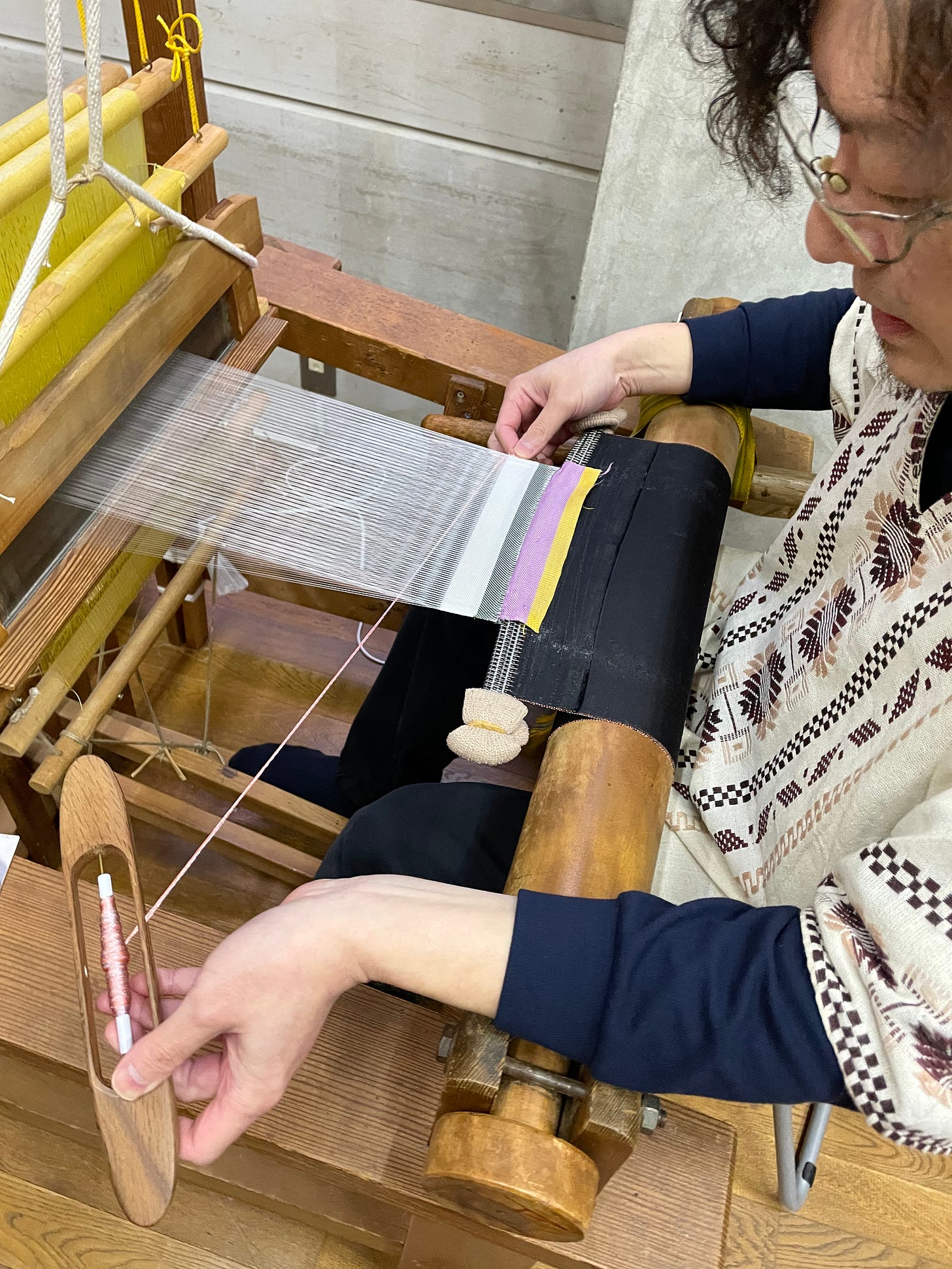Hi! Writing to you now from Fukuoka. Since I last posted, I spent about a week in Kyoto and a blitz in Naoshima. I’m definitely feeling the effects of an ambitious itinerary, but I’ve also found my stride in traveling and navigating Japan. Rest assured that I am having the time of my lil life!
Kyoto was so delightful. Possibly my favorite city in the world, it has an inimitable charm and balances past and present so well. I had the honor of visiting studios and institutions working to preserve centuries-old craft traditions and carry them into the future. I’ll focus here on Kyoto nishijin weaving (西陣織), an ornate textile of the highest quality, often used for ceremonial garments like kimono and obi.
I went first to Koho Nishiki Textile Studio, a small family business in its fourth generation.

This is Tatsumura-san. His great-grandfather founded the business in 1894 and he continues to lead it today. When I mentioned that I felt Japan was successful in upholding its traditions, Tatsumura-san disagreed. Not many people do this work anymore, and he feels it’s his responsibility to educate others and prevent nishijin weaving from disappearing. Part of that requires modernizing the craft to create pieces beyond traditional kimonos. He collaborates with students at Doshisha University to make artwork with weaving.
Tatsumura-san took the time to pass on a bit of knowledge to me as well! Here I am learning twill weave, or 綾織り, using silk:
This was my first time using this kind of loom and this kind of shuttle. It has wheels on the bottom that help it pass through the warp. It takes time to get the hang of it — I was awestruck watching Tatsumura-san do it so skillfully and smoothly.
Looks like I don’t have a photo of the final product but you get the idea! It’s a square, maybe 8”x8” or something like that. Here’s the ceremonial cut:
I still need some time to reflect on the act of weaving. It might sound silly but I actually felt the weight and power of this act, of using a loom that was decades old and a technique that was older still. Maybe at the end of all this I’ll be closer to putting it into words.
After the workshop, this guide gave me a tour of the building. He had a funny little flashlight that he used to shine a light on every single textile he presented. Why? To show how the silk changed in different light.
“Japanese culture values change and impermanence,” he said. This attitude, seen in the Japanese appreciation of changing seasons, can also apply to the textile arts. With shimmering thread, new views spring from the same object. A galaxy from a detail.








